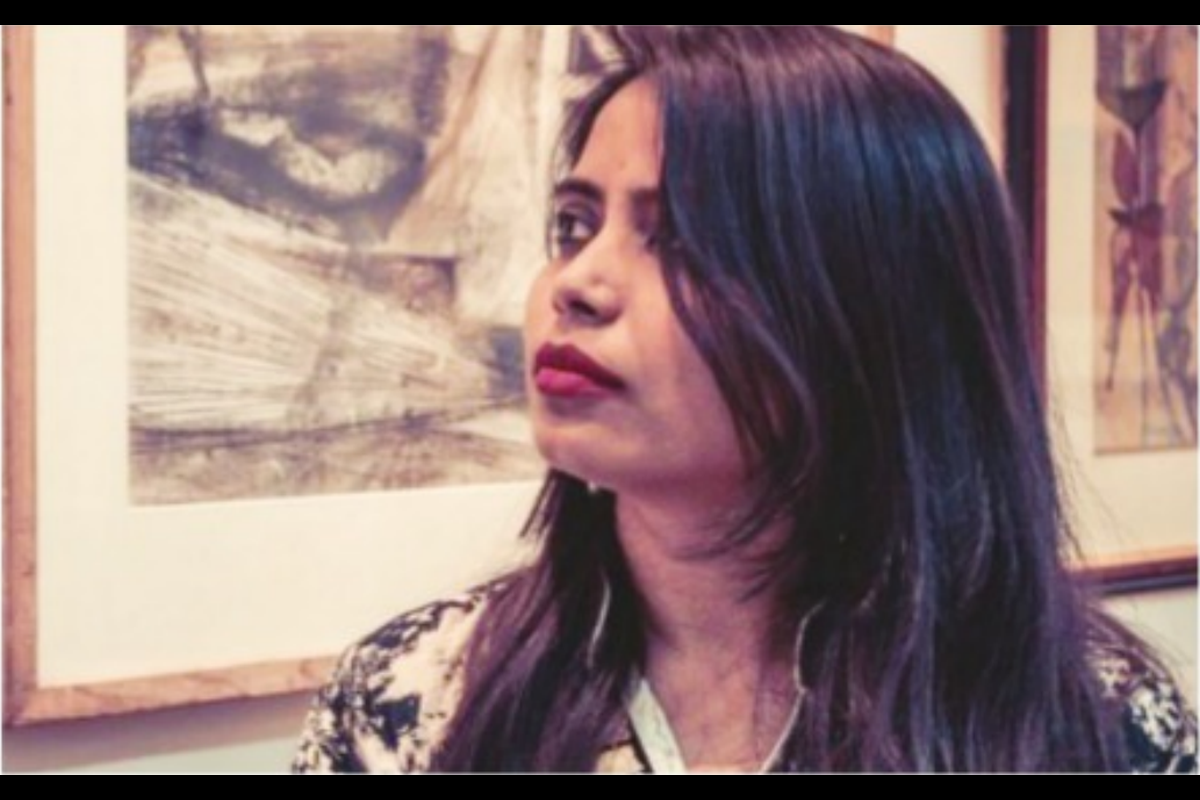Unbridled expression of inner-self
A poetry session organised recently by Intercultural Poetry and Performance Library at Kolkata, explored the role of poets towards their communities.
The 41 poems in the collection speak of life, death, pain and suffering, of hope and faith in the power of love. Written in a lucid, simple language with vivid, evocative images it conveys the poets feelings and emotions.

(Photo: SNS)
Death in the Holy Month is the debut collection of poems by Sufia Khatoon, an editor, translator, a multilingual poet, a performance poet and artist and is the co-founder of Rhythm Divine Poets, Kolkata. As Professor Sanjukta Dasgupta notes in the volume, “(the) well-wrought poems are a fine blend of striking visual imagery and sensitive wordplay”. Sharmila Ray, in her foreword to the volume, describes the poems as “words singing into poems,…from the enchantment of search between possibility and reality”. Sufia notes that her poems talk about pain, “pain that binds us all and teaches us to survive”. The 41 poems in the collection speak of life, death, pain and suffering, of hope and faith in the power of love. October Hibiscus speaks of languishing and longing. There is a sense of nostalgia that seems to be broken by reference to death.
Last night I felt the fear of death.
9 – am – flowers still half- awake,
eavesdrop
in my glass of poetry
in invited evening’s chanting
I feel life breathing now
Empty Rooms speaks of loss and longing in a very lyrical way. Memories entwine beautifully with thoughts and emotions to create a feeling that lingers on.
Advertisement
The rooms travel in between days
and nights,
light and dark, frequenting in
silence,
between my last memory of the Eid
with my sister
and this Eid with her longing.
The poem evocatively refers to “shared dresses” and “empty screams” that seems to tear at the heartstrings. Seasons of Death and Mangoes evokes nostalgia for a time past. It also brings in reference to illness, “Cancer was what ate him away”. The poem evocatively uses the idea of eating to speak of life, illness and death while at the same time recreating pleasant memories that are a contrast to all the loss and suffering. There is a great desire to return to the state of childhood, and the questions, “What eats life?”, “What eats memories?”, “What eats innocence?” speak of this state succinctly.
Many of the poems have Hindi and Urdu words used in them. Such words are explained in English in some poems and in some their meaning is left to be construed from the context. Death in the Holy Month speaks of prayer and holiness while bringing in the reference to death and life too.
The lingering taste of life then
invokes me:
Souls belong to nature,
mixing in earth, sky, fire, and water,
and thus, no more of it.
The poem brings in a reference and quotes two lines from Dylan Thomas’s Conversation of Prayer, a poem which speaks of prayer and of two voices praying.
Poetry, as Khatoon says, is a prayer for her. It is a form that allows her to speak of spirituality, seek solace and understand the essential meaning of life and death.
Nothing can change the
course of destiny,
it was written long before you were
born.
Another poem, Frostbitten Revolution speaks more about poetry.
The vision of poetry,
the verse of pets,
nobody loves poetry more than the
mad,
perhaps we shall meet beyond this
madness.
The poems in Death in the Holy Month is characterised by the use of vivid images that speak of love, death, suffering, dreams, aspirations, disease, longing, sadness, memories and nostalgia ~ “yellow of summer,” “Red earth-dusted hands,” “watermark of life,’ “ogling disgusted eyes,” “summer of mangoes”. In spite of the fact that the poems speak of death and suffering, they reveal a zest for life, a zest that goes beyond all the weariness and pain that life is all about.
The poems are reflective in nature and reveal a spirituality that gnaws at the heartstrings. They voice hope, hope that shines through all the darkness and dreariness, all the melancholy and suffering that one encounters.
I can be your halo.
I can be your grief.
But, I want to be your moment of
peace
Live, dear brother, that is my gift
Compassion and spirituality characterize the poems in this volume. There are some that seem to voice the anguish and screams that haunt when in grief and anguish. Letters to ‘The Self begins with an address to.
“Dear Self”: you know, life is a question to me.
And desires caging my heart, a board
game.
Today I stand in thick mud
holding nothing but sorrow
tomorrow I will hold pain.
Written in a lucid, simple language with vivid, evocative images that beautifully convey the poet’s feelings and emotions, the poems in the volume appeal to the senses. The illustrations in the volume, done by the poet, add to the aesthetic pleasure of the reading experience. Khatoon’s poems definitely add to the oeuvre of Indian poetry in English.
Advertisement